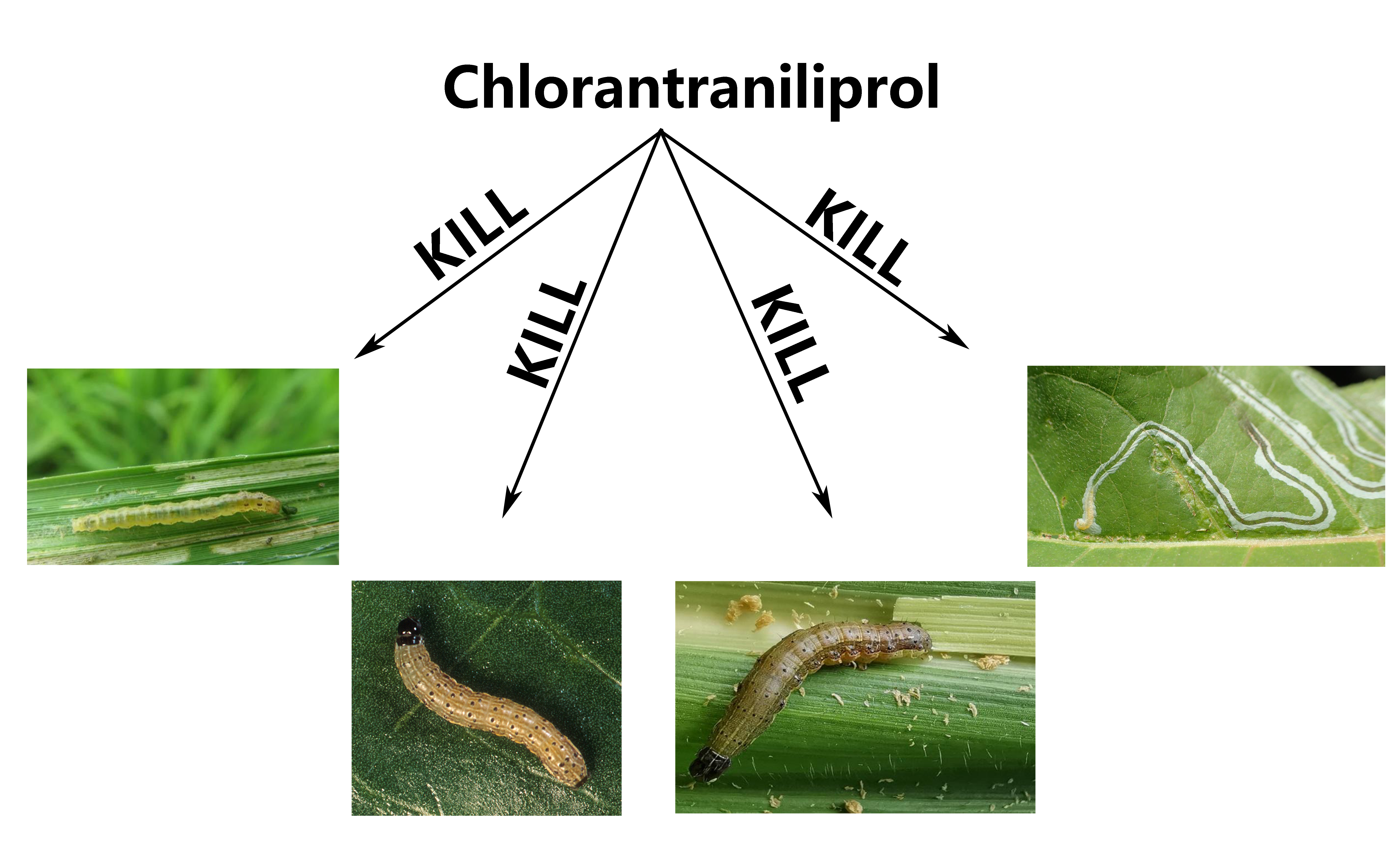Which crops are suitable for chlorantraniliprole use?
Currently, chlorantraniliprole is mainly used in field crops such as rice and corn in the domestic market. However, the next incremental market is expected to be in cash crops and fruit trees.
From the registration trend, chlorantraniliprole has expanded its application from field crops such as rice, corn, peanuts, cotton, and potatoes to economic crops such as vegetables, citrus, apples, lychees, and sugarcane.
We can foresee that with the popularization and application of chlorantraniliprole in the terminal market and the reduction of usage costs, it will inevitably have a considerable impact on the sales and market share of traditional insecticides in cash crops and fruit tree markets. At the same time, with the increase in registration of chlorantraniliprole in granular formulations, it also has the potential to become a incremental market of medicine Fertilizer products.
Advantages of Chlorantraniliprole
Since its launch in 2008, chlorantraniliprole has been sold in over 100 countries worldwide and has become the world's largest insecticide. What are the advantages of chlorantraniliprole?

Broad spectrum of insecticidal activity
Chlorantraniliprole not only has specific effects on lepidopteran pests but also works against coleopteran pests, hemipteran pests like aphids, and dipteran pests like leaf miners
Multiple application crops
Chlorantraniliprole is not only used in field crops but also widely applied in cash crops and fruit trees.
High insecticidal activity and strong compatibility
Chlorantraniliprole mixtures will become the mainstream in the future market. Currently, it is mainly combined with nicotine compounds, pyrethroids, Emamectin Benzoate, indoxacarb, Lufenuron and chlorfenapyr. Mixing chlorantraniliprole can expand the spectrum of insecticidal activity, increase the efficacy, prolong the life cycle of chlorantraniliprole, and enhance the comprehensive management of pests.
Mature formulation development
Domestic registration has expanded from suspension concentrates to microencapsulated suspension concentrates, water-dispersible granules, granules, ultra-low volume liquids, and other formulations.
A variety of application methods
Chlorantraniliprole is widely used in a variety of application scenarios, including soil application, field spraying, and aerial spraying.

Disadvantages of Chlorantraniliprole
The problem of resistance to chlorantraniliprole has always been a concern of the industry and is an unavoidable issue. In recent years, with the increase in usage time and dosage, resistance has become evident, such as the rapid increase in resistance of lepidopteran pests on rice, such as the striped stem borer and the rice leaf folder. In cash crops, resistance of beet armyworm and diamondback moth also shows an upward trend. In addition to resistance, chlorantraniliprole has limited efficacy against small insects, which is also one of the limiting factors for the future development of chlorantraniliprole.
Lastly, chlorantraniliprole still poses certain risks to the biological environment.